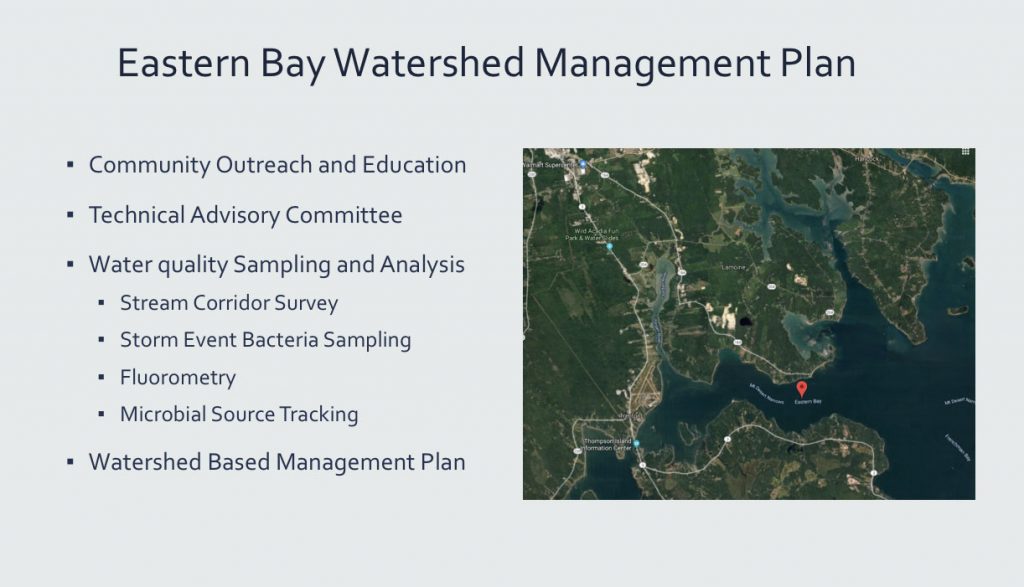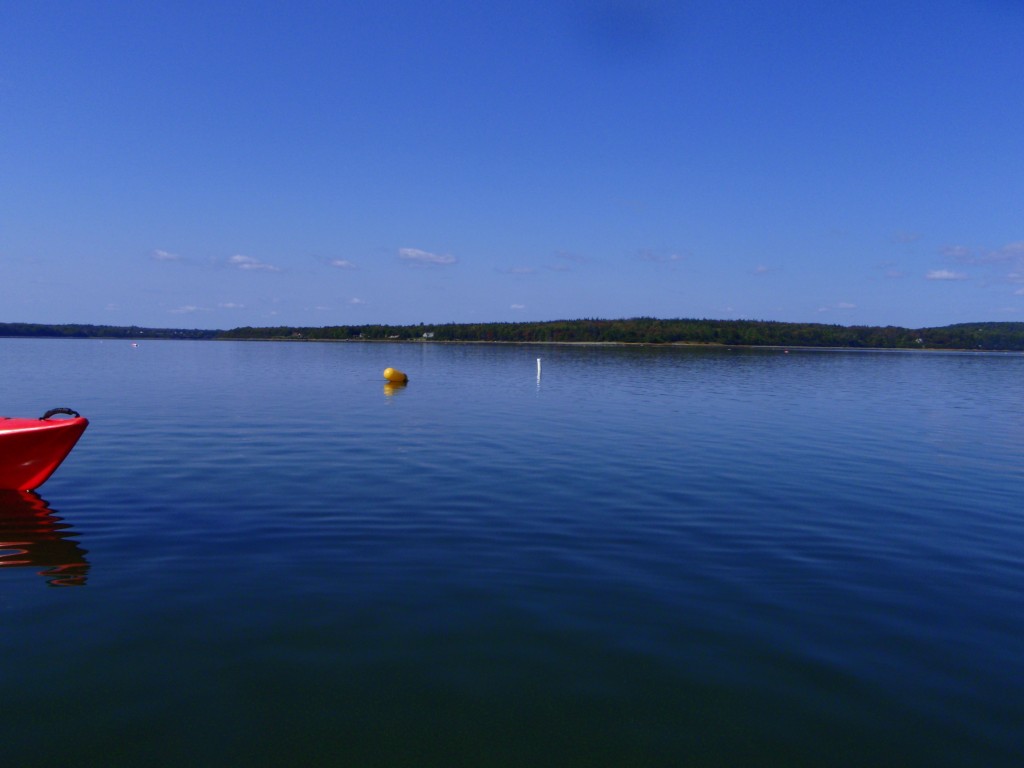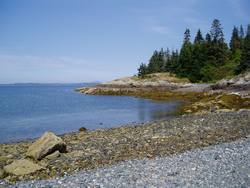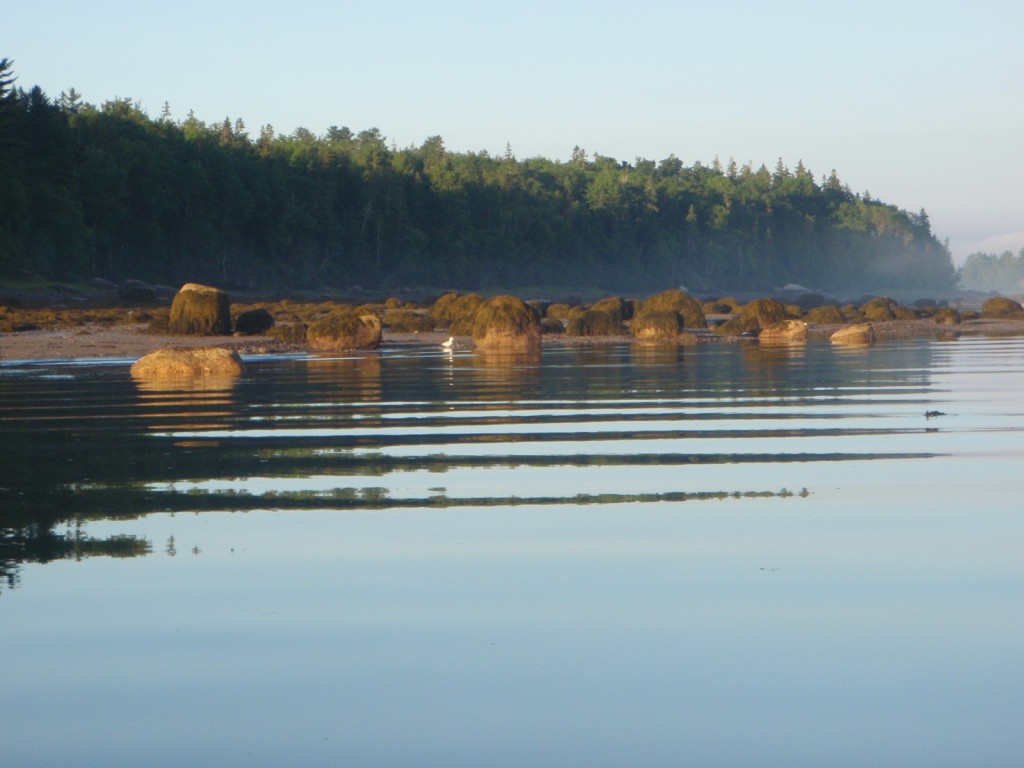Summary of a presentation at the September 7, 2019 meeting “Water Quality, Stewardship, and the health of Frenchman Bay” organized by Frenchman Bay Partners and held at Schoodic Institute.
Zack Steele, Executive Director of the Hancock County Soil & Water Conservation District, presented on the Eastern Bay Watershed Management Plan. This management plan is funded in part by the Maine Coastal Program at Maine Department of Agriculture Conservation and Forestry’ with an anticipated completion date of November 2020. The partners for this research are Frenchman Bay Partners, Frenchman Bay Conservancy, The University of Maine, College of the Atlantic, MDI Biological Laboratory, Frenchman Bay Regional Shellfish Committee, the town of Lamoine, and the Hancock County Soil & Water Conservation District. This management plan is based on the U.S. Environmental Protection Agency’s nine-element plan which includes: Identify source & cause of pollution; Estimate pollutant loading and load reduction; Describe actions to achieve load reductions; Estimate technical and financial assistance; Develop an education plan; Develop a project schedule; Identify measurable milestones; Identify performance indicators; Identify monitoring. The scope of the project will be regarding activities in the Jordan River Watershed and aquaculture in the Mount Dessert Narrows in Eastern Bay. There is a technical advisory committee for this project that will choose water sampling locations, refine sampling techniques, and prioritizes pollution mitigation sites. For the designated sites there will be multiple sampling protocols such as fluorometry to test high bacteria concentrations, microbial source tracking, stream corridor surveys to locate sediment loads and locate human placed structures, and storm event sampling at known pollutant hot spots to estimate peak discharge as well as post-storm samples. Using the nine-elements, the management plan will guide watershed restoration in order to reduce fecal bacteria and ultimately prevent shellfish closures.

Return to water-quality-meeting



